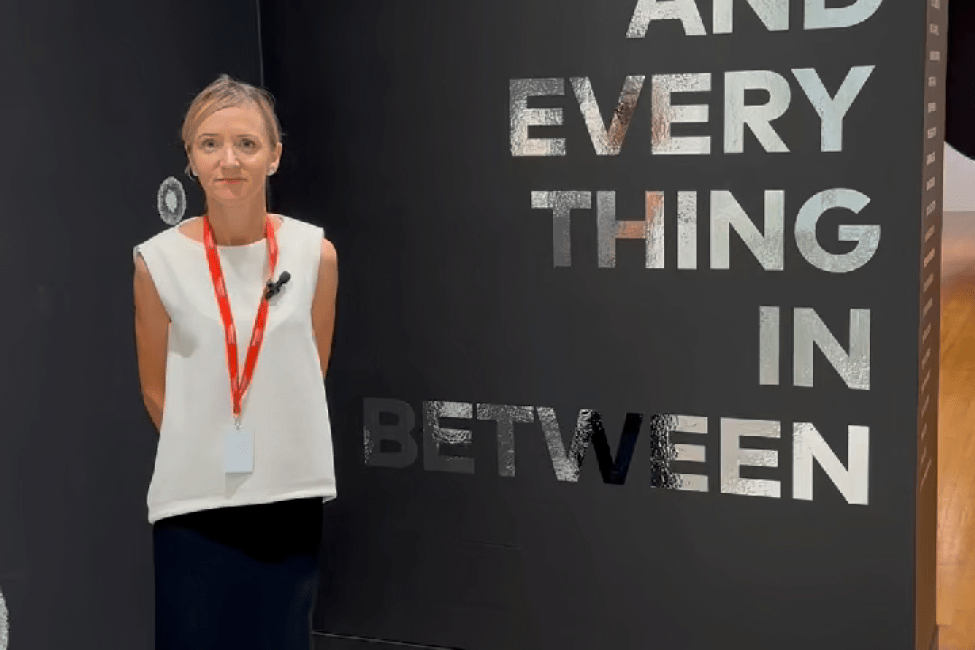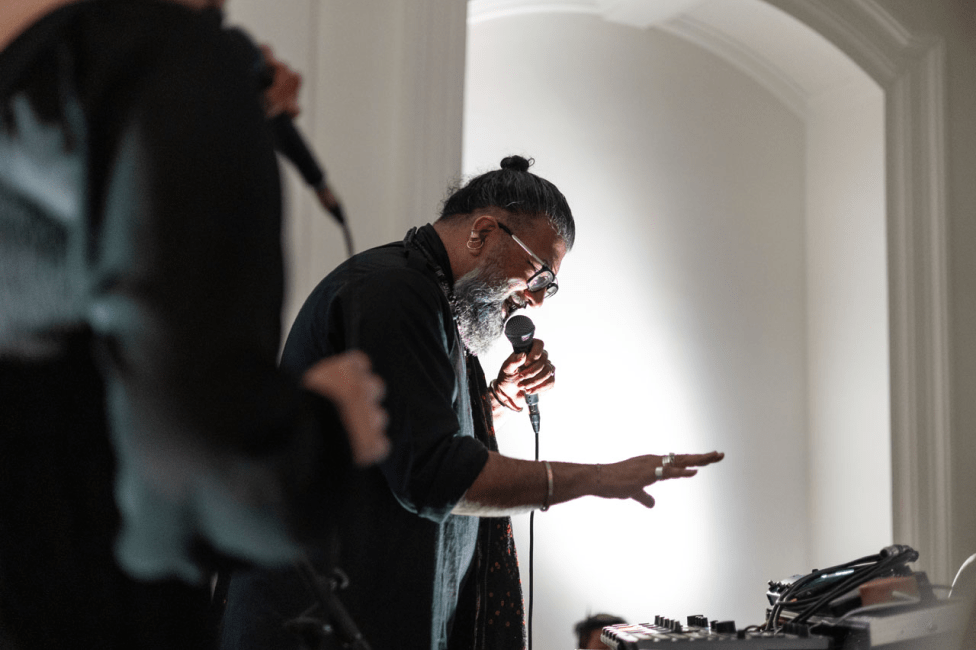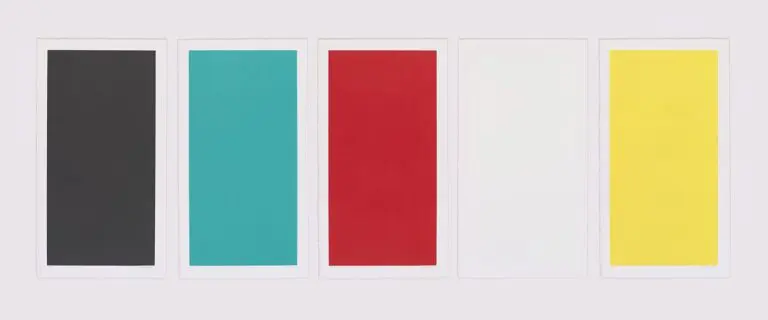A Studio Visit With Evan Lee
In conjunction with the exhibition Black and White and Everything In Between: A Monochrome Journey, we asked Vancouver artist Evan Lee to take us into his studio to give audiences insight into his practice.
Watch the full video interview to get a closer look at his studio and artistic process.
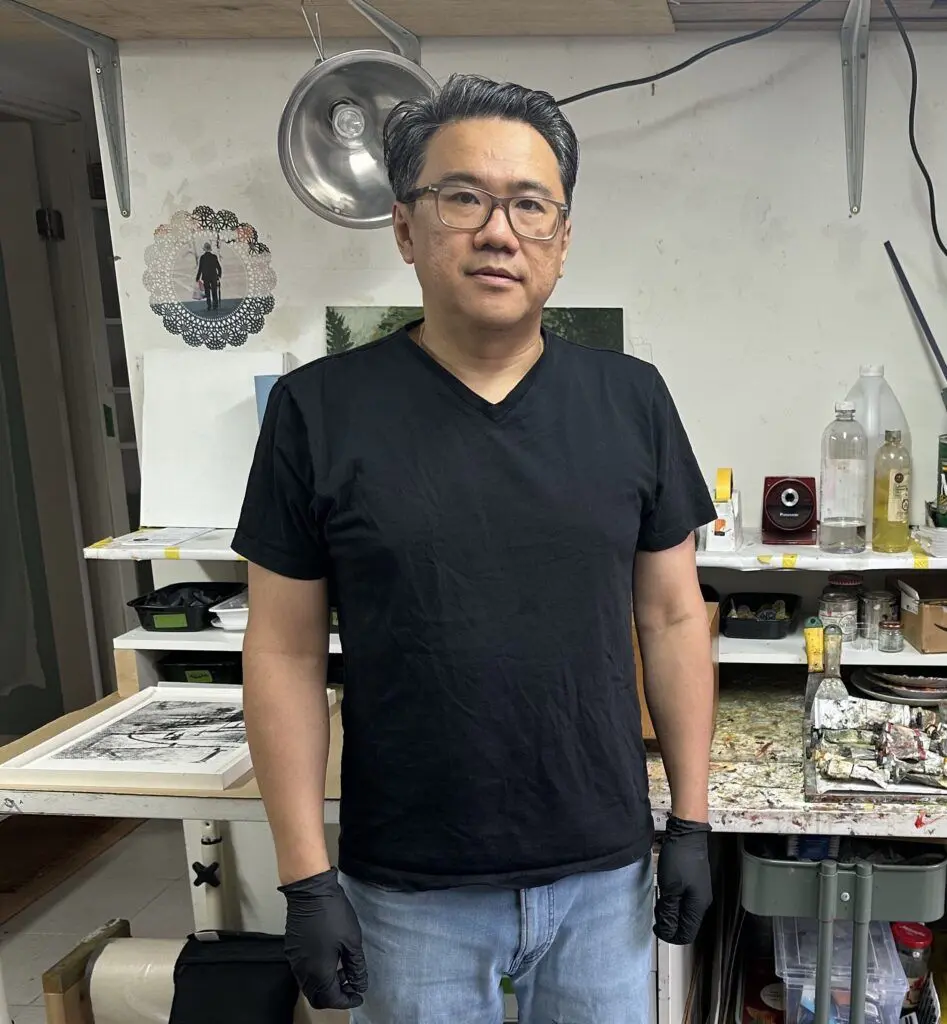
Evan Lee in his studio, 2024
Please introduce yourself.
Evan Lee (EL): My name is Evan Lee, and I am a Chinese-Canadian visual artist. I was born in East Vancouver, and I live here with my wife, my child and my cat.
Can you tell us a bit about your practice?
EL: For the past almost 30 years, I’ve been making experimental work, mostly using photographic technologies to explore ideas around painting. But, more recently, I’ve done a 180 and have been focusing on making paintings that are based on photography and digital imaging. The kinds of subjects I’m interested in include: history, the value of everyday objects, critique of the media, how my city has changed and the stories of immigrants.
Your work is quite varied. Why do you like to work across a variety of mediums, including photography, video and painting?
EL: Yes, I’ve always been a bit all over the place. I think it’s because I’ve always seen all mediums as being related, and it’s the ideas and concepts that tie them together. Sometimes, one form works better than the other, or it can offer a different perspective, so it’s important for me to try them all out and see what makes the best fit. I also like to experiment and try new things.
Can you tell us about your painting Cirage (Polish Painting #1) (2022-23), now on view at the Gallery? (The making of it, some of the social and/or historical context to the work, etc.)
EL: “Cirage” is French for “shoe polish.” I chose it for the title because it makes something that is otherwise plain a little bit fancier, which is sort of what shoe polish does.
It all started with a body of work I was making for an exhibition about fakery, economy and value. This was during the pandemic, so these themes—which I had been exploring since the beginning—were quite relevant and timely.
So, I made a series of works exploring shoe polish as a painting medium. I was thinking about the history of shoe polish–a low, cheap industrial product, and the history of shoe polishing, which is often entangled with racism and classism.
I was also thinking about the similarities between shoe polish and fine art paint. They are basically made of the same things.
These paintings were smaller black squares made with shoe polish. Each one had a different level of shine, depending on how long I spent polishing them. Some of them were matte, and others were super glossy.
Later, I decided to make a pair of large paintings, also black squares. For this, I made my own shoe polish with beeswax as a base. It was a slightly elevated version of shoe polish but based on a traditional and all-natural formula. It was much safer to work with and is more durable and archival. And so, one of these two paintings is the one in the exhibition.
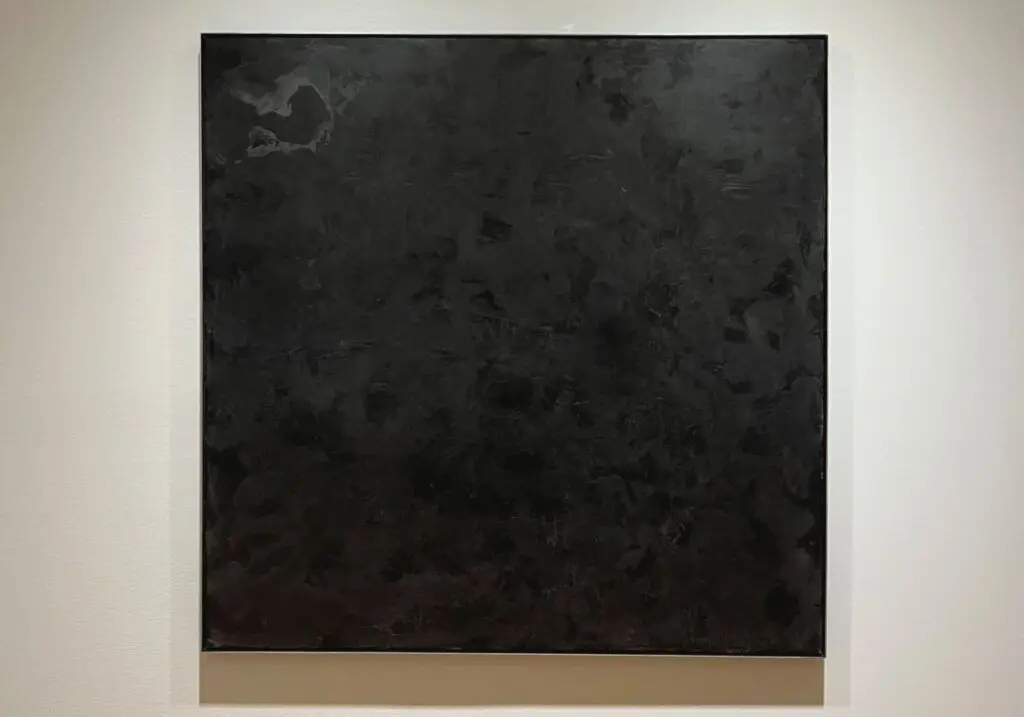
Evan Lee, Cirage (Polish Painting #1), 2022/23, Homemade shoe polish on aluminium panel, Photo: Courtesy of the Artist
EL: During my research for this, I sort of re-discovered Louis Daguerre’s Boulevard du Temple, which is known as the first photograph, an 1838 Daguerreotype, that depicts a human. It’s a tiny detail in a large Parisian streetscape. Because early photographic plates were not very light sensitive, the only live objects that could be captured were this shoeshiner and his customer, because they were inadvertently holding still. So, I made a few works that riffed on this detail, such as these paintings, shoe polish tins, and a screenprint of the detail printed with shoe polish.
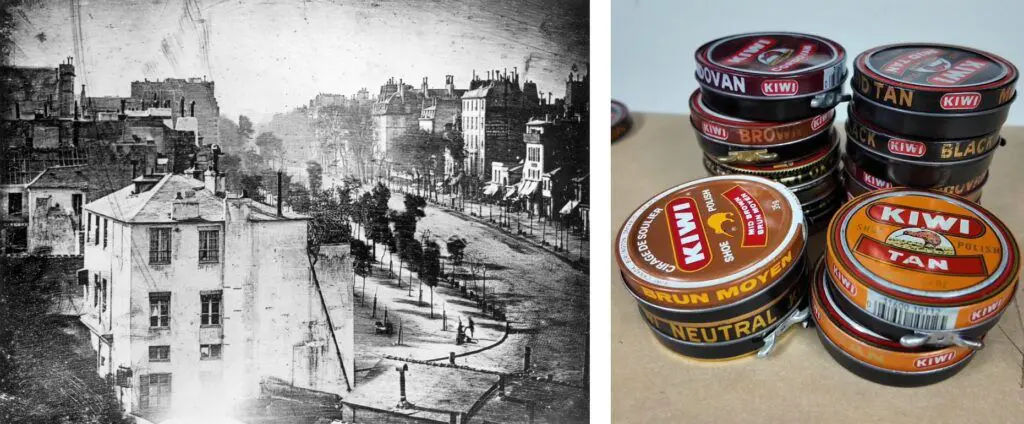
(Left) Louis-Jacques-Mandé Daguerre, Paris Boulevard (or View of the Boulevard du Temple), 1839, daguerreotype; (Right) Shoe polish tins from Evan Lee’s studio, 2024
Q: You explore the monochrome genre in this work. There are a few artists reworking the “black monochrome,” some from less formal and more social contexts. How are you thinking about this idea?
EL: For me, approaching the loaded history of the monochrome in this way was a perfect balance of the formal and social. It’s a manifestation of labour and ready-made materials, but it also talks about their histories.
Although my painting is monochromatic at first glance, it’s actually quite dynamic and interactive. Parts of the painting are shiny and act as a mirror. Also, the painting may lose its luster over time and may need to be re-buffed, so, in that sense, I see it as a living work.
With the monochrome, I’m also playing with perceived value in art, in using a cheap product to mimic paintings that are sometimes regarded as priceless. After all, shoe polish is typically used to hide flaws and provide a presentable finish to an otherwise scuffed or weathered material. It’s superficial, a faux-finish—is paint any different?
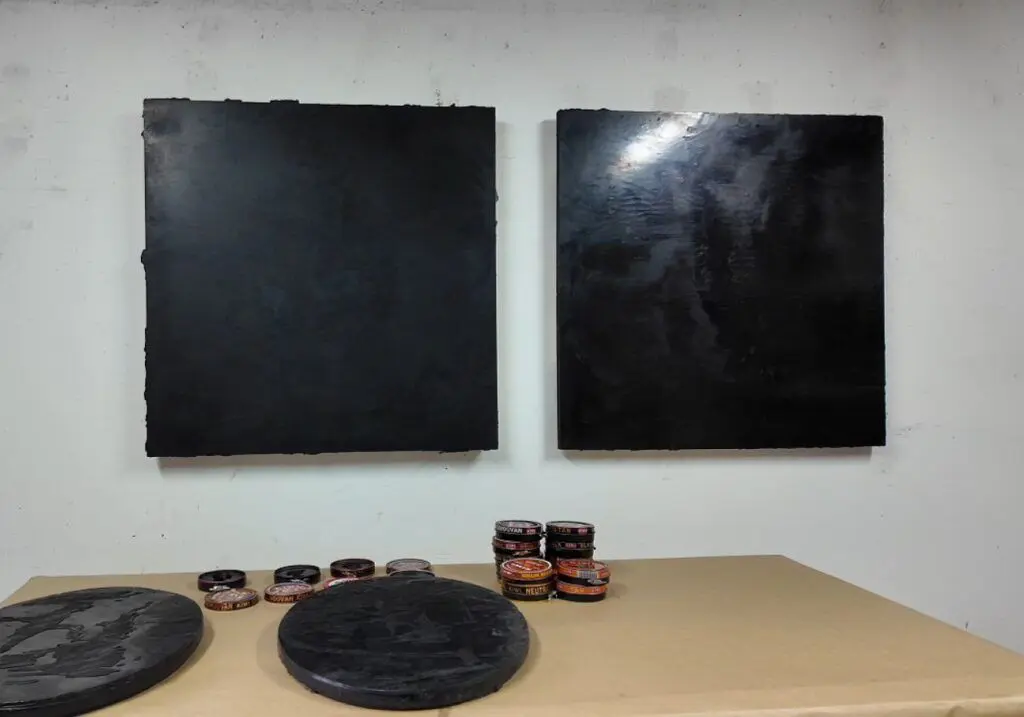
Artworks and shoe polish tins in Evan Lee’s studio, 2024
Why do you think so many artists are still making black monochromes?
EL: I suppose that despite its relatively short history, it’s become canonized as a universal subject. We see I the exhibition just how many ways a monochrome can be approached. Who would have thought that a plain black square could be thought about, or talked about at length, but here we are. I also think there is something about the initial experience of purity and simplicity, staring into the void, that it can symbolize everything and nothing at once.
Are you moving a bit more toward abstraction in your practice now? Why?
EL: I’m probably moving in the opposite direction, focusing on figurative work, but given my circular and circuitous tendencies, I’m sure I’ll end up back here in no time.
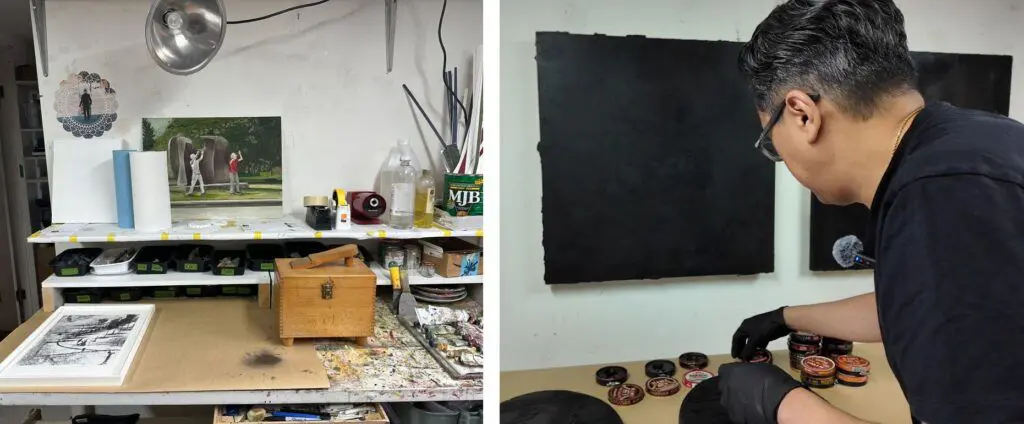
(Left) Evan Lee’s studio, 2024; (Right) Evan Lee working in his studio, 2024
WATCH THE VIDEO
A Studio Visit with Evan Lee
FOLLOW EVAN LEE ON SOCIAL MEDIA
DELVE DEEPER INTO THE EXHIBITION
Closing November 3, Black and White and Everything In Between: A Monochrome Journey uses colour as an organizing principle, creating unexpected juxtapositions that allow us to see familiar works in new ways. Don’t miss this ode to the monochrome! Delve deeper into the artists’ exploration of colour through a selection of interviews.

